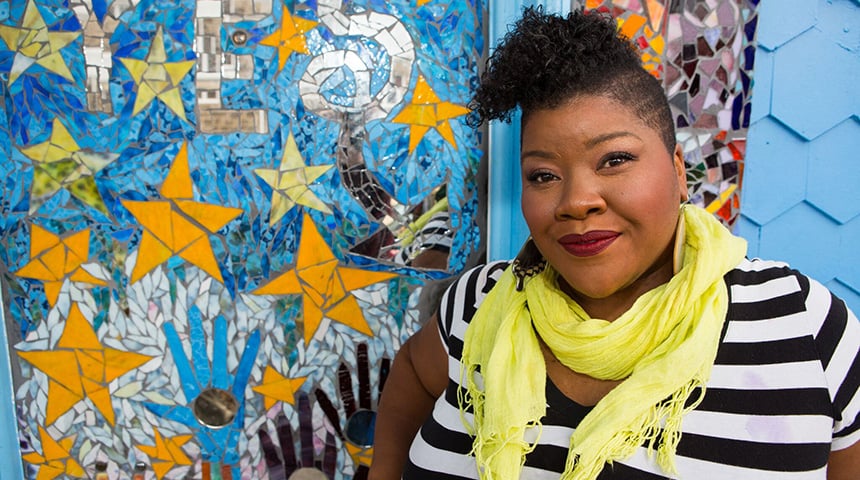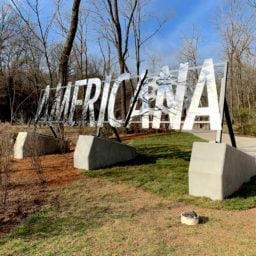Self-taught artist Vanessa German is the winner of the 2018 Don Tyson Prize, a biannual $200,000 award for outstanding achievement in visual art from the Crystal Bridges Museum of American Art in Bentonville, Arkansas. A 41-year-old sculptor, painter, poet, and performance artist, German is also an activist, advocating for local children and running the community-based program Art House in the historic Pittsburgh neighborhood of Homewood.
“Vanessa’s work is inspiring, socially relevant, and continues to have a great impact, not only on the Homewood community, but the contemporary art world as a whole,” Lauren Haynes, Crystal Bridges’s curator of contemporary art, told local NPR affiliate WESA.
The Don Tyson award was established in 2012 as part of a $5 million gift to the museum from the Tyson Family and Tyson Foods, Inc. which also launched the Tyson Scholars of American Art program. In 2016, the inaugural prize went to the Smithsonian’s Archives of American Art in Washington, DC. The award is named in honor of family scion Don Tyson, a dedicated collector of art of the American West who died in 2011.
German said she was “shocked” by the win. “It was surprising in a way that was surprising to the bone,” she told artnet News. This isn’t the first time she’s been recognized by a major award, however. Most recently, the self-described “citizen artist” was among this year’s United States Artists fellows, an award that comes with a $50,000 unrestricted grant.
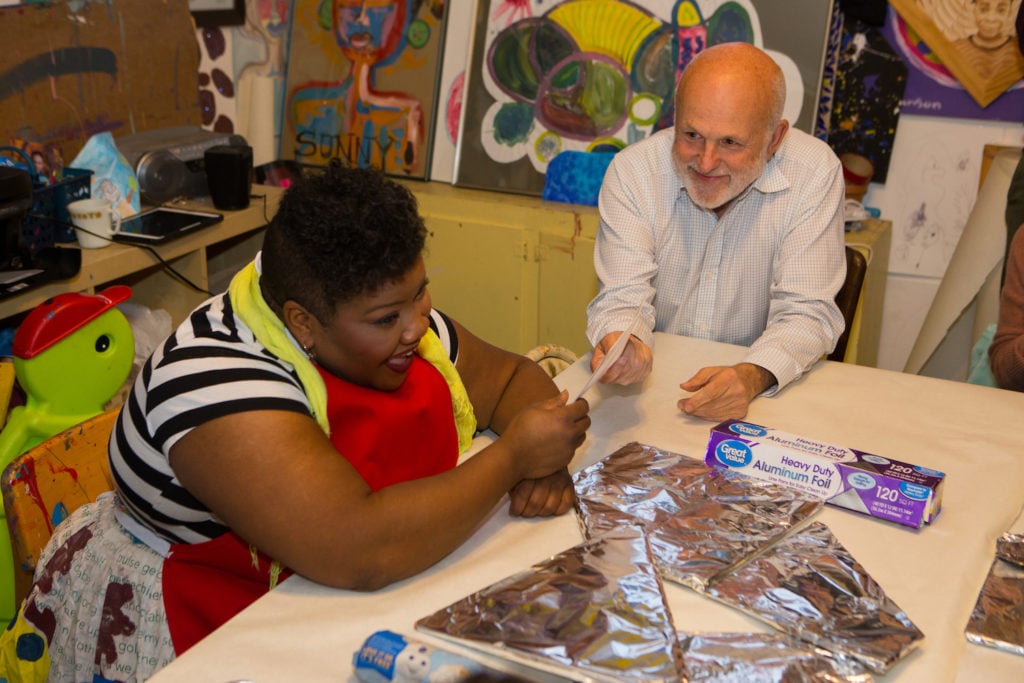
John Tyson presents the Don Tyson Prize to Vanessa German at the Art House. Photo by Sean Carroll.
But this time around she didn’t even known she’d been nominated. “It came completely out of the blue,” German said, calling the experience receiving the award from Tyson’s son, John Tyson, “humbling and affirming.”
It was also incredibly timely. Mere hours before she received the call from museum director Rod Bigelow informing her of the win, German had received a court summons. The concrete steps outside one of her three Homewood properties were cracked and in need of immediate repair. With the award, German can afford to fix that problem and allow her to continue her work with the local community.
That work began in about 2007. “I had attempted suicide,” German revealed. On the brink of trying again, she decided to give up her day job and dedicate herself to making art full time. “I thought, before I end my life, let me see if it is true that there’s power in art. Let me see if art can keep me from ending myself.”
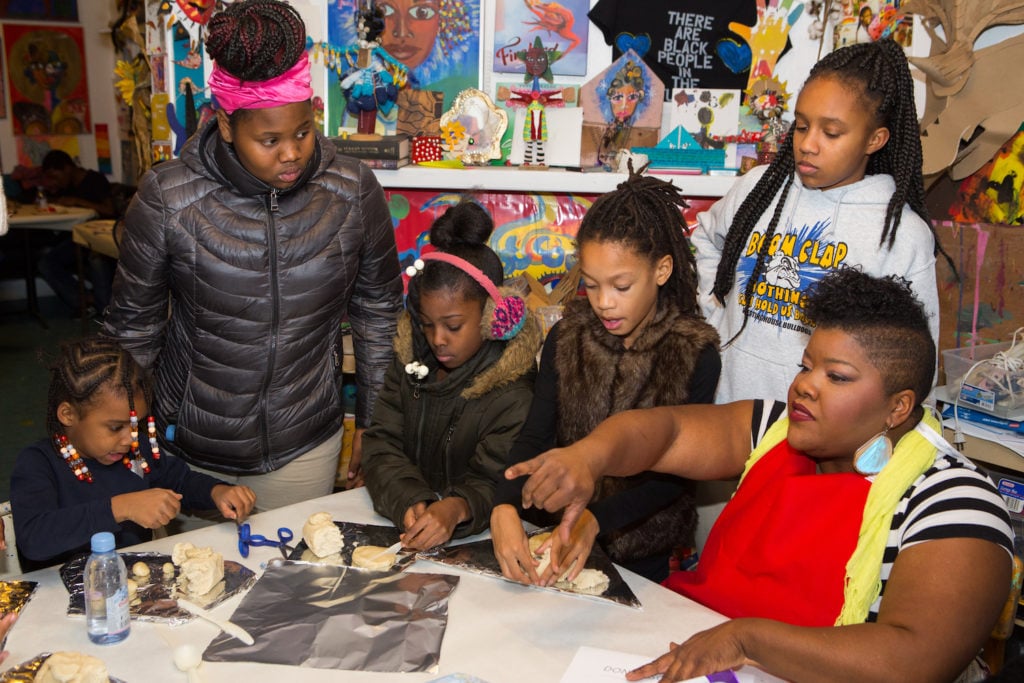
Vanessa German with local children at the Art House. Photo by Sean Carroll.
“I worked in my basement in a level of poverty that I think surprises people,” she said. “I lived without running water for over half a year.” She was able to pay her water bill and have service restored only after she met art dealer Pavel Zoubok, the New York gallerist who purchased four sculptures on the spot and continues to represent her to this day. (About half of German’s United States Artists grant went toward finally paying the back taxes she owed.)
As German worked, crafting large-scale sculptures from found materials at abandoned homes—she has since become known for her African American “power figures” which confront the violence of white supremacy and racism—she sometimes found herself working outdoors just to have more space. Local children were drawn like moths to a flame, and German found herself giving them clay and other art materials, encouraging them to make work of their own.
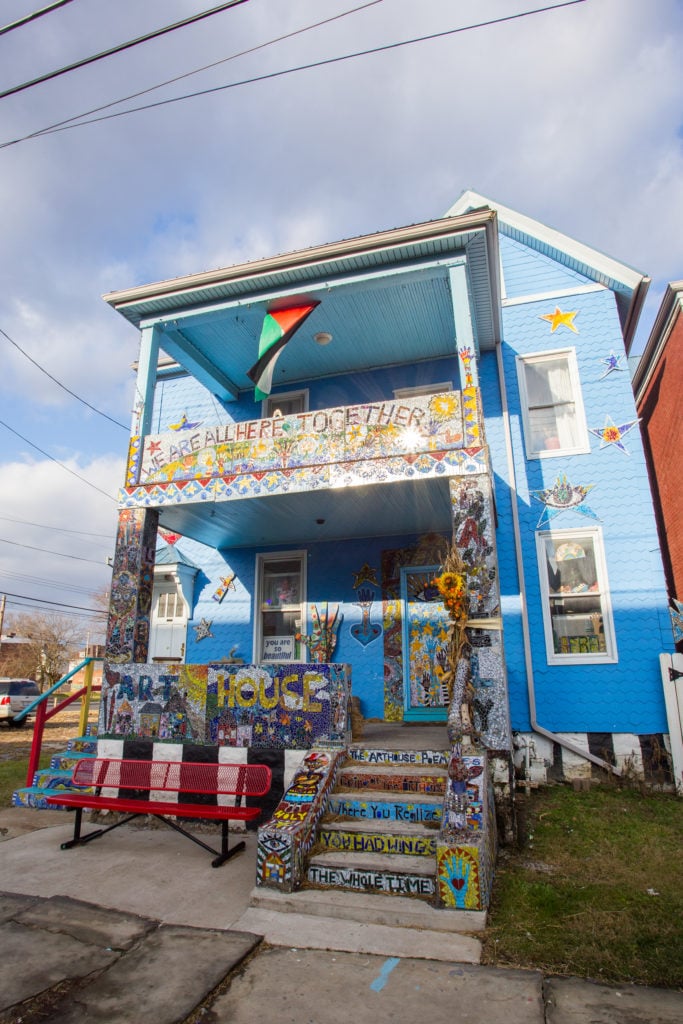
Vanessa German’s Art House. Photo by Sean Carroll.
When she bought her first home in the neighborhood, she turned the front porch into a studio. A highly visible perch in front of a bus stop, it became more and more of a gathering place, with German and neighborhood children making art side by side at what became known as the Love Front Porch.
“People would ask, ‘Is this a day care?'” German recalled. She later partnered with a local low-income housing company on a more formalized space before buying two more local properties, one of which became Art House. “Whenever the front door is open anyone can come in. It acts as a neighborhood studio. There are all kinds of art supplies. You can make jewelry, glass mosaics, you can work with clay, you can do screen printing, you can paint, and you can always get something to eat.”
Once described by MSNBC as “The Most Dangerous Neighborhood in America,” Homewood is rapidly gentrifying. With the money from the Don Tyson award, German plans to open the Museum of Resilience at the Art House as a way of honoring and acknowledging the neighborhood’s large population of single black mothers and their children, and the violence they have witnessed there. (An alley behind the Art House has been nicknamed the Killing Fields because of all those who have been murdered there.)
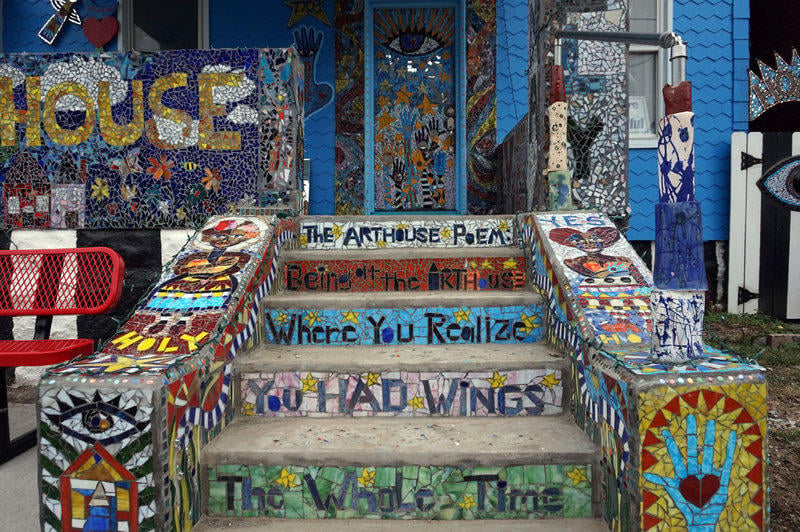
Vanessa German’s Art House. Photo by Sean Carroll.
With the opening of the Museum of Resilience, the alley will instead become a pilgrimage, a path of Toynbee tiles leading from the museum—currently a garage—to the original Love Front Porch. German plans to transform the space with a blue glass mosaic. The exterior of museum itself will also be covered in tiles decorated with the tracings of arms and hands that German plans to solicit from people around the world, with the help of friends working at refugee camps or with Amnesty International.
She envisions the museum as an opportunity for social healing and connection. “The idea is to have a place honoring the power and the sanctity of our lives that is also a place of beauty and imagination and wonder that resists erasure,” German said. “It stands for the people who are already here, people who are often diminished.”
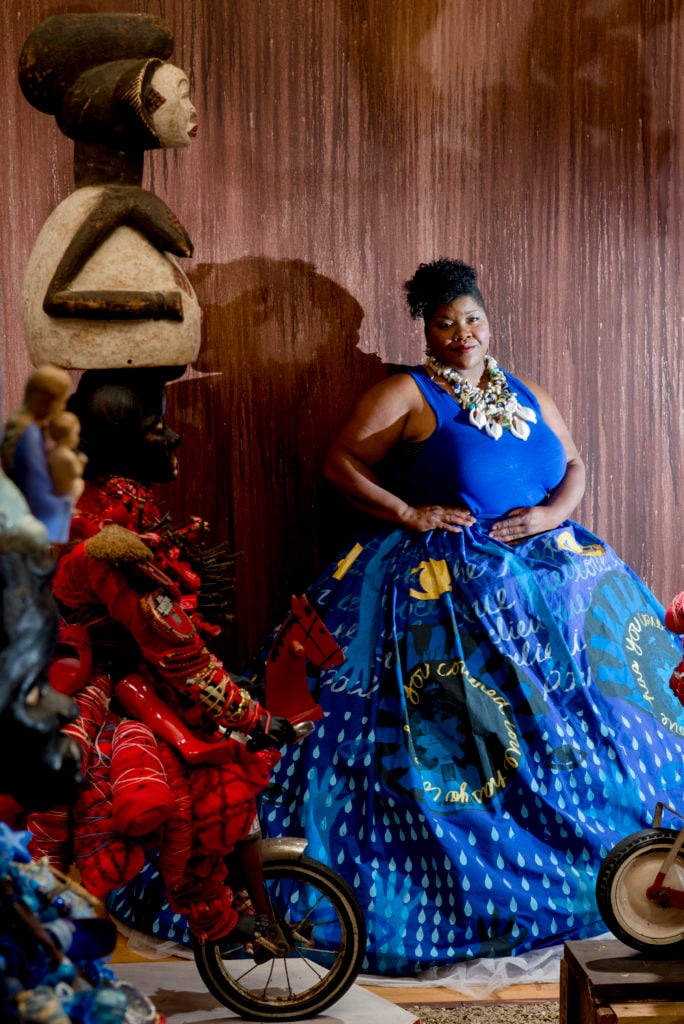
Vanessa German in her exhibition “MATRIX 174/i come to do a violence to the lie” (2016) at the Wadsworth Atheneum Museum of Art. Photo by Allen Phillips/Wadsworth Atheneum Museum of Art.
On a more practical level, German also hopes to build herself a true art studio in one of her backyards, an open space with a garage door that will allow her to more easily build her large-scale installations. “I’m definitely pushing up against the walls and the ceiling working in a residential space!” she said.
German has an existing relationship with Crystal Bridges, having been one of the artists selected for the the 2014 survey “State of the Art: Discovering American Art Now,” which saw curators put together the exhibition after conducting 1,000 studio visits with artists across the US.
“The first time I saw her art at Crystal Bridges, I knew nothing about her or her art. I started crying. Then I learned her story and it became even more powerful for me,” Alice Walton, the Walmart heiress and founder of Crystal Bridges, told the Pittsburgh Post-Gazette. “She’s one of my idols.”
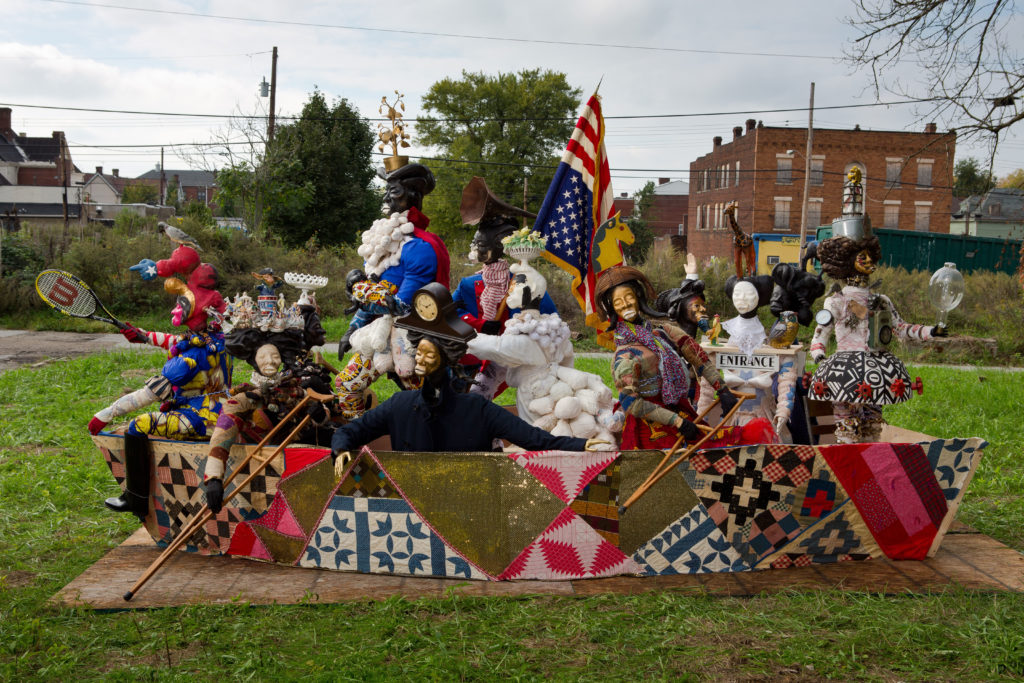
Vanessa German, Prototype for Miracles and Glory Abound (2018). Photo by Heather Mull, courtesy of the artist and Pavel Zoubok, Fine Art, New York.
As part of the show, German held a series of workshops at the museum, and, by popular demand, is scheduled to return to Bentonville in the spring for the museum’s distinguished lecturer series.
Other upcoming projects include a solo show “Miracles And Glory Abound,” at Michigan’s Flint Institute of Arts, with a full-size sculptural recreation of Emanuel Leutze’s Washington Crossing the Delaware featuring an all-female cast. Her installation sometimes. we. cannot. be. with. our. bodies., which debuted at the Mattress Factory in Pittsburgh this year, will go on tour starting in Charlotteville, Virginia, and German will appear in a PBS’s State of the Art documentary, premiering in April 2019.
